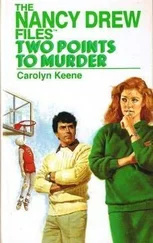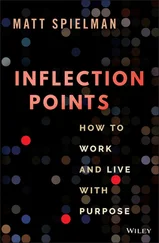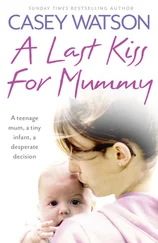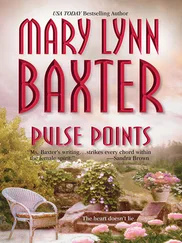
The gains came at a precious cost. Between the start of the war and Operation Anaconda, twenty-seven brave Americans were killed. I read each name, usually in my early morning briefings at the Resolute desk. I imagined the pain their families felt when the military officer appeared at their door. I prayed that God would comfort them amid their grief.
Early in the war, I decided to write letters to the family members of Americans lost on the battlefield. I wanted to honor their sacrifice, express my sorrow, and extend the gratitude of the country. As I sat down to write on November 29, 2001, I remembered a letter Abraham Lincoln had written in 1864 to Lydia Bixby, a Massachusetts woman who was believed to have lost five sons in the Civil War.
“I feel how weak and fruitless must be any word of mine which should attempt to beguile you from the grief of a loss so overwhelming,” Lincoln wrote. “But I cannot refrain from tendering you the consolation that may be found in the thanks of the Republic they died to save. I pray that our Heavenly Father may assuage the anguish of your bereavement, and leave you only the cherished memory of the loved and lost, and the solemn pride that must be yours to have laid so costly a sacrifice upon the altar of freedom.”
My letter was addressed to Shannon Spann, the wife of Mike Spann, the CIA officer killed in the prison uprising at Mazar-i-Sharif and the first battlefield death of the war: Dear Shannon,On behalf of a grateful nation, Laura and I send our heartfelt sympathy to you and your family on the loss of Mike. I know your heart aches. Our prayers are with you all.Mike died in a fight against evil. He laid down his life for a noble cause—freedom. Your children must know that his service to our nation was heroic and brave.May God bless you, Shannon, your children, and all who mourn the loss of a good and brave man.Sincerely,George W. Bush
I sent letters to the families of every service member who laid down his or her life in the war on terror. By the end of my presidency, I had written to almost five thousand families.

In addition to my correspondence, I met frequently with family members of the fallen. I felt it was my responsibility to comfort those who had lost a loved one. When I traveled to Fort Bragg in March 2002, I met the families of servicemen killed during Operation Anaconda. I was apprehensive. Would they be angry? Would they be bitter? I was ready to share tears, to listen, to talk—whatever I could do to ease their pain.
One of the widows I met was Valerie Chapman. Her husband, Air Force Technical Sergeant John Chapman, had bravely attacked two al Qaeda bunkers in remote mountains during an enemy ambush, helping to save his teammates before laying down his own life. Valerie told me John loved the Air Force. He had enlisted when he was nineteen and had served for seventeen years.
I crouched down so that I was eye level with John and Valerie’s two daughters—Madison, age five, and Brianna, age three. I pictured my own girls at that age. My heart broke at the thought that they would grow up without their dad. I told them he was a good man who had served with courage. I fought back tears. If the little girls remembered anything of the meeting, I wanted it to be how much I respected their father, not a weepy commander in chief.
As the meeting wrapped up, Valerie handed me a copy of her husband’s memorial pamphlet. “If anyone ever tells you this is the wrong thing to do,” she said intently, “you look at this.” She had written a note on the pamphlet:
“John did his job, now you do yours.”
I remembered her words, and others like them, every time I made decisions about the war.

Over time, the thrill of liberation gave way to the daunting task of helping the Afghan people rebuild—or, more accurately, build from scratch. Afghanistan in 2001 was the world’s third-poorest country. Less than 10 percent of the population had access to health care. More than four out of five women were illiterate. While Afghanistan’s land area and population were similar to those of Texas, its annual economic output was comparable to that of Billings, Montana. Life expectancy was a bleak forty-six years.
In later years, Afghanistan would often be compared with Iraq. But the two countries started from vastly different points. At the time of its liberation, Afghanistan’s per capita GDP was less than a third of Iraq’s. The infant mortality rate in Afghanistan was more than twice as high. Helping the Afghan people join the modern world would clearly be a long, arduous undertaking.
When I ran for president, I never anticipated a mission like this. In the fall of 2000, Al Gore and I debated the most pressing issues facing America. Not once did the words Afghanistan , bin Laden , or al Qaeda come up. We did discuss nation building. “The vice president and I have a disagreement about the use of troops,” I said in the first debate. “… I would be very careful about using our troops as nation builders.”
At the time, I worried about overextending our military by undertaking peacekeeping missions as we had in Bosnia and Somalia. But after 9/11, I changed my mind. Afghanistan was the ultimate nation building mission. We had liberated the country from a primitive dictatorship, and we had a moral obligation to leave behind something better. We also had a strategic interest in helping the Afghan people build a free society. The terrorists took refuge in places of chaos, despair, and repression. A democratic Afghanistan would be a hopeful alternative to the vision of the extremists.
The first step was to empower a legitimate leader. Colin Powell worked with UN officials on a process for the Afghan people to select an interim government. They decided to hold a traditional Afghan gathering called a loya jirga , or grand council. Afghanistan was not a safe enough place to convene the meeting, so Chancellor Gerhard Schroeder of Germany generously offered to host the council in Bonn.
After nine days of deliberations, the delegates selected Hamid Karzai to serve as chairman of the interim authority. When Karzai arrived in Kabul for his inauguration on December 22—102 days after 9/11—several Northern Alliance leaders and their bodyguards greeted him at the airport. As Karzai walked across the tarmac alone, a stunned Tajik warlord asked where all his men were. Karzai responded, “Why, General, you are my men. All of you who are Afghans are my men.”

Five weeks later, I looked Hamid Karzai in the eye for the first time. Forty-four years old with sharp features and a salt-and-pepper beard, Karzai cut a distinctive figure. He wore a shimmering green cape over his gray tunic, along with a pointed cap made of goatskin that was traditional in his southern Afghan tribe.
“Mr. Chairman, welcome to America,” I said, “and welcome to the Oval Office.” I experienced some fascinating moments in that office over the years. Opening the door for the leader of a free Afghanistan four months after 9/11 ranks among them.

In the Oval Office with Hamid Karzai. White House/Eric Draper
“On behalf of me and my people, thank you, Mr. President,” Karzai said. “The United States liberated Afghanistan from the Soviet Union in the 1980s. And now you have liberated us again from the Taliban and al Qaeda.
Читать дальше













